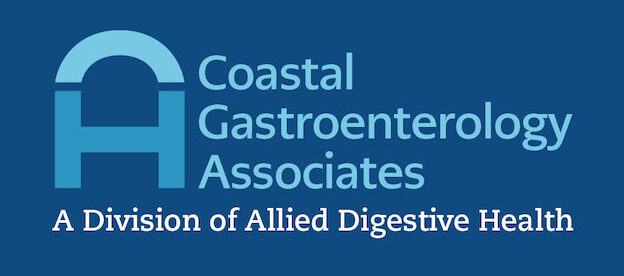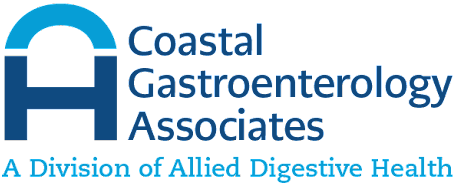Food Allergies vs. Food Intolerances: Differentiating Symptoms and Finding Relief

- November 23, 2023
Food Allergies vs. Food Intolerances: Differentiating Symptoms and Finding Relief
Welcome to the world of food reactions, where the battles between food allergies and food intolerances are waged within our bodies! It’s a complex landscape with mysterious symptoms, surprising culprits, and unexpected heroes.
In one corner, we have food allergies, fierce fighters that can cause an immediate and sometimes life-threatening reaction. On the other, we have food intolerances, the stealthy operators causing discomfort and mayhem over a prolonged period.
Navigating these battles can feel daunting, but fear not! By understanding the different symptoms and strategies for relief, we can arm ourselves with knowledge and transform this battlefield into a peaceable kingdom. Let’s dive into the fray!
Food Allergies: The Immune System’s Overreaction
Food allergies can sometimes feel like a ticking time bomb. The immune system’s response to certain foods can cause symptoms ranging from mild discomfort to life-threatening reactions. It’s important to note that there is a difference between food allergies and food intolerances. A food allergy involves the immune system, while a food intolerance does not.
Differentiating between the two can help find relief for those suffering from these conditions. If you suspect that you may have a food allergy, it’s essential to work with a healthcare provider to find a solution. Tests are available to diagnose food allergies and various methods to manage the symptoms. While coping with a food allergy can be challenging, finding the proper support can make all the difference.
Common Allergens and Their Severity
Here is a list of common food allergens:
- Milk: Many people, especially young children, have a reaction to dairy products. Symptoms can range from mild, such as hives, to severe, such as anaphylaxis.
- Eggs: This is another common food allergy in children. Some can tolerate baked goods with eggs, but react to scrambled or fried eggs.
- Fish: This allergy is often lifelong. Both finned fish and shellfish can cause reactions in people who are allergic.
- Shellfish: This includes crustaceans and mollusks, such as shrimp, crab, and lobster, as well as clams, oysters, and mussels.
- Tree Nuts: These include, but are not limited to, almonds, cashews, walnuts, and pecans. People who are allergic to tree nuts usually avoid all nuts due to potential cross-contamination.
- Peanuts: Despite the name, peanuts are not true nuts; they are legumes. However, people who are allergic to peanuts might also be allergic to tree nuts.
- Wheat: Wheat allergy is common in children and is usually outgrown. It’s different from celiac disease and non-celiac gluten sensitivity.
- Soy: This is a common food allergy in babies and children. Soy is in many foods, making it difficult to avoid.
Each of these allergens can cause a serious reaction, and it is crucial to seek medical attention if you suspect you or someone you know might have a food allergy.
The severity of reactions to common food allergens can vary significantly from person to person. For some, exposure to these allergens might result in mild symptoms such as hives, itching, and gastrointestinal issues.
However, for others, the same exposure could trigger a severe, life-threatening reaction known as anaphylaxis. This acute allergic reaction can include symptoms such as difficulty breathing, dizziness, rapid pulse, and loss of consciousness.
Peanuts and tree nuts are often associated with the most severe allergic reactions. Shellfish allergies, too, can cause significant symptoms, and unlike many food allergies, they tend to first appear in adulthood.
Milk and soy allergies, on the other hand, are most common in children and often outgrown over time, though they can still cause severe reactions. Therefore, it’s crucial for individuals with known food allergies to carry emergency medication, such as an epinephrine auto-injector, and seek immediate medical attention in the event of exposure to a known allergen.
Recognizing Symptoms of Food Allergies
Recognizing the symptoms of a food allergy is vital in managing the condition and preventing severe reactions. Symptoms can occur within minutes of eating the food or might not appear for several hours. Here are some common symptoms associated with food allergies:
- Skin reactions: These can include hives, itching, or eczema.
- Respiratory symptoms: These might involve wheezing, nasal congestion, coughing, or trouble breathing.
- Gastrointestinal symptoms: These can range from abdominal pain, diarrhea, nausea, vomiting to severe reactions like gastrointestinal bleeding.
- Cardiovascular symptoms: These could involve symptoms like a drop in blood pressure, fainting, or even shock.
- Anaphylaxis: This is a severe, potentially life-threatening allergic reaction that can occur rapidly and may cause death if not treated immediately.
In most cases, the severity of symptoms can vary widely among individuals and change in the same person over time. If you experience any of these symptoms after consuming food, seeking medical attention is crucial.
The symptoms can be similar, but it’s essential to differentiate between the two to find relief. While intolerances often cause digestive issues, food allergies can trigger various symptoms, from hives and swelling to difficulty breathing and anaphylaxis. If you suspect that you or a loved one has a food allergy, it’s essential to seek medical attention and get tested. Proper diagnosis and management, you can learn to avoid allergens and live a healthy, symptom-free life.
Food Intolerances: Digestive System Discomfort
Food intolerances are becoming more common and can cause significant discomfort in those who suffer from them. It is essential to understand the difference between a food allergy and a food intolerance, as they have different symptoms and require different treatment approaches. Food intolerances occur when the digestive system has difficulty breaking down certain foods, leading to uncomfortable symptoms such as bloating, gas, diarrhea, or constipation.
Unlike allergies, food intolerances do not involve the immune system and do not cause life-threatening reactions. If you suspect you have a food intolerance, there are steps you can take to find relief. Keeping a food diary and eliminating one suspect food at a time could help you identify the culprit. Consider working with a healthcare professional to test for specific food intolerances to find a more personalized approach to managing your symptoms.
Common Food Intolerances
Here are some common food intolerances:
- Lactose Intolerance: This is the inability to digest lactose, a sugar found in milk and other dairy products. Individuals with lactose intolerance typically lack sufficient lactase enzymes. Symptoms include cramping, bloating, and diarrhea.
- Gluten Intolerance (Non-Celiac Gluten Sensitivity): Some people may experience similar symptoms to celiac disease, such as bloating, stomach pain, and tiredness, but without the immune response that damages the intestine.
- Fructose Intolerance: This intolerance involves difficulty absorbing fructose, a sugar found in fruits, honey, and some vegetables.
- Salicylate Intolerance: Salicylates are chemicals found in many foods, especially fruits and vegetables, and people with this intolerance experience asthma-like symptoms or skin rash.
- Histamine Intolerance: Some people can’t break down histamine, a compound found in fermented foods, and they experience symptoms such as flushing, headaches, or hives.
- Sulfite Sensitivity: Sulfites are often used as preservatives in food and drinks. People with sensitivity can experience asthma symptoms or skin rash.
- Caffeine Sensitivity: Some people are more sensitive to caffeine, experiencing jitteriness, nervousness, or heart palpitations after consuming caffeinated beverages.
Each of these food intolerances can cause discomfort and affect quality of life, so it’s important to work with a healthcare professional if you suspect you have one. They can help you plan a balanced diet that avoids trigger foods while ensuring you get all the necessary nutrients.
It’s important to keep track of your eating, as certain foods may trigger symptoms for some but not others. An elimination diet can be a helpful tool in identifying problem foods. And if necessary, a visit to a healthcare professional can help you figure out the root cause of your intolerance. Finding relief from typical food intolerances is achievable with support and the right approach.
Identifying Symptoms of Food Intolerances
Food allergies and food intolerances are often used interchangeably, but they refer to two conditions. While food allergies result from an immune system response to a particular food, food intolerances involve difficulty digesting certain foods. Identifying an intolerance can be tricky, as symptoms can vary widely and often take longer than those of allergies.
Here are some common symptoms associated with food intolerances:
- Digestive issues: These can include bloating, gas, diarrhea, or constipation.
- Stomach pain: Discomfort or pain in the abdomen is a common symptom.
- Heartburn: This burning sensation in the chest is often a symptom of food intolerance.
- Headaches: Some individuals may experience headaches or migraines.
- Fatigue: Feeling fatigued after meals can be a symptom.
- Skin problems: Some people may experience skin issues like rashes or eczema.
- Mood changes: Irritability, nervousness, or sudden mood changes can also be a sign.
- Runny nose or sneezing: Some individuals may experience these symptoms, particularly with histamine intolerance.
- Increased heart rate: This can occur particularly with sensitivity to certain foods like caffeine.
- Brain fog: Difficulty concentrating or confusion can sometimes be associated with food intolerances.
Remember, the severity and type of symptoms can vary widely from person to person and may be influenced by the amount of the food consumed and how often. If you suspect you have a food intolerance, you must seek medical advice for a proper diagnosis and treatment plan.
When to Talk to Your Doctor
If you have ever experienced stomach pain, bloating, itching, or other discomfort after eating, you may wonder if you have a food allergy or food intolerance. While both conditions have similar symptoms, they can be very different in terms of severity and treatment. That’s why it’s important to talk to your doctor if you suspect you have either of these conditions.
By getting a proper diagnosis, you’ll be able to differentiate between the symptoms of food allergies and food intolerances and get on the path towards relief. A food allergy can be life-threatening, so working with your doctor to identify allergens and receive the appropriate treatment is especially critical. If you have a food intolerance, there are still options for symptom relief, such as avoiding certain foods or taking supplements.
So, don’t hesitate to reach out to your doctor if you think you may have a food allergy or intolerance. It could make a big difference in your quality of life.
Footer
© All Rights Reserved


